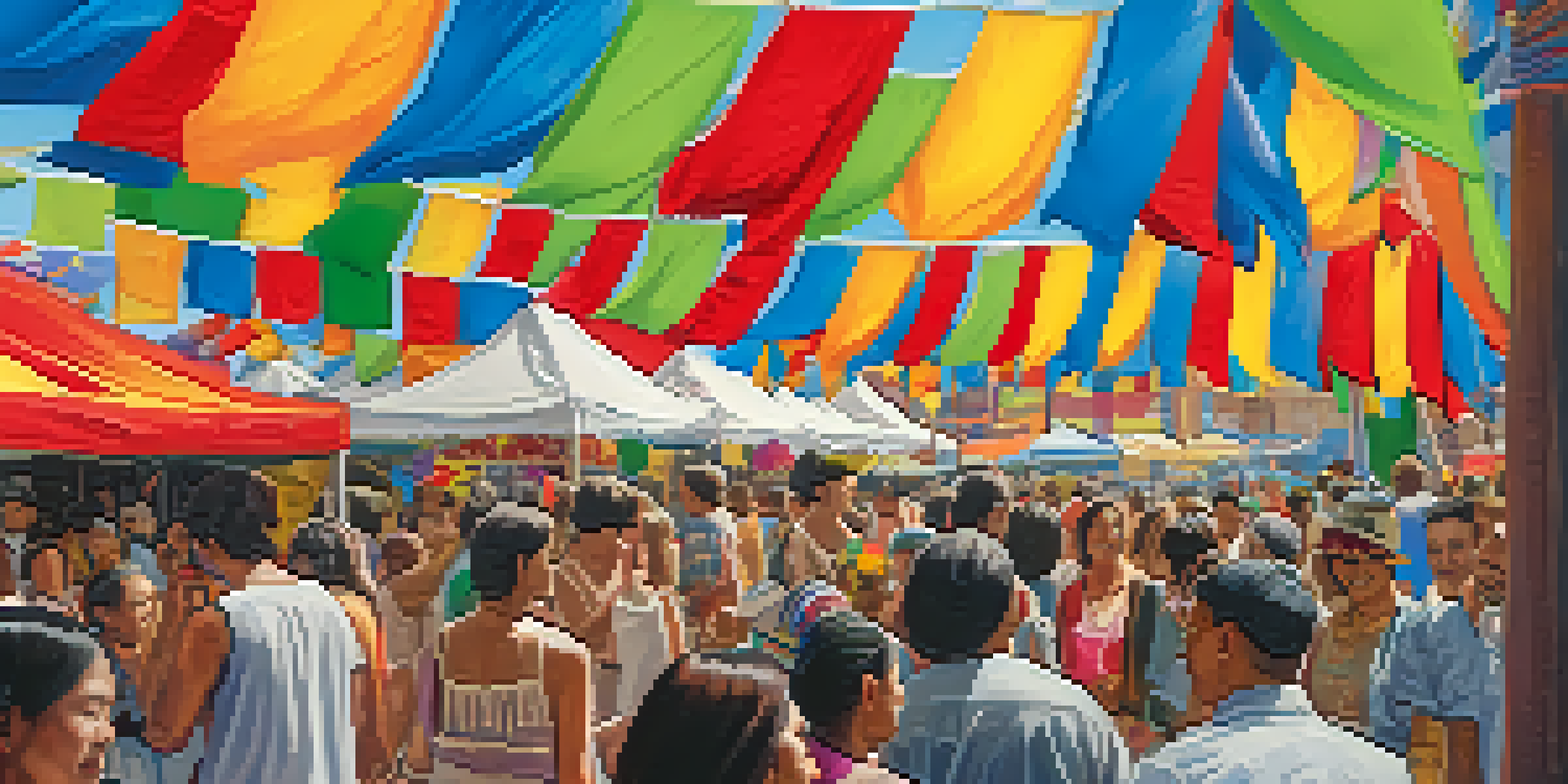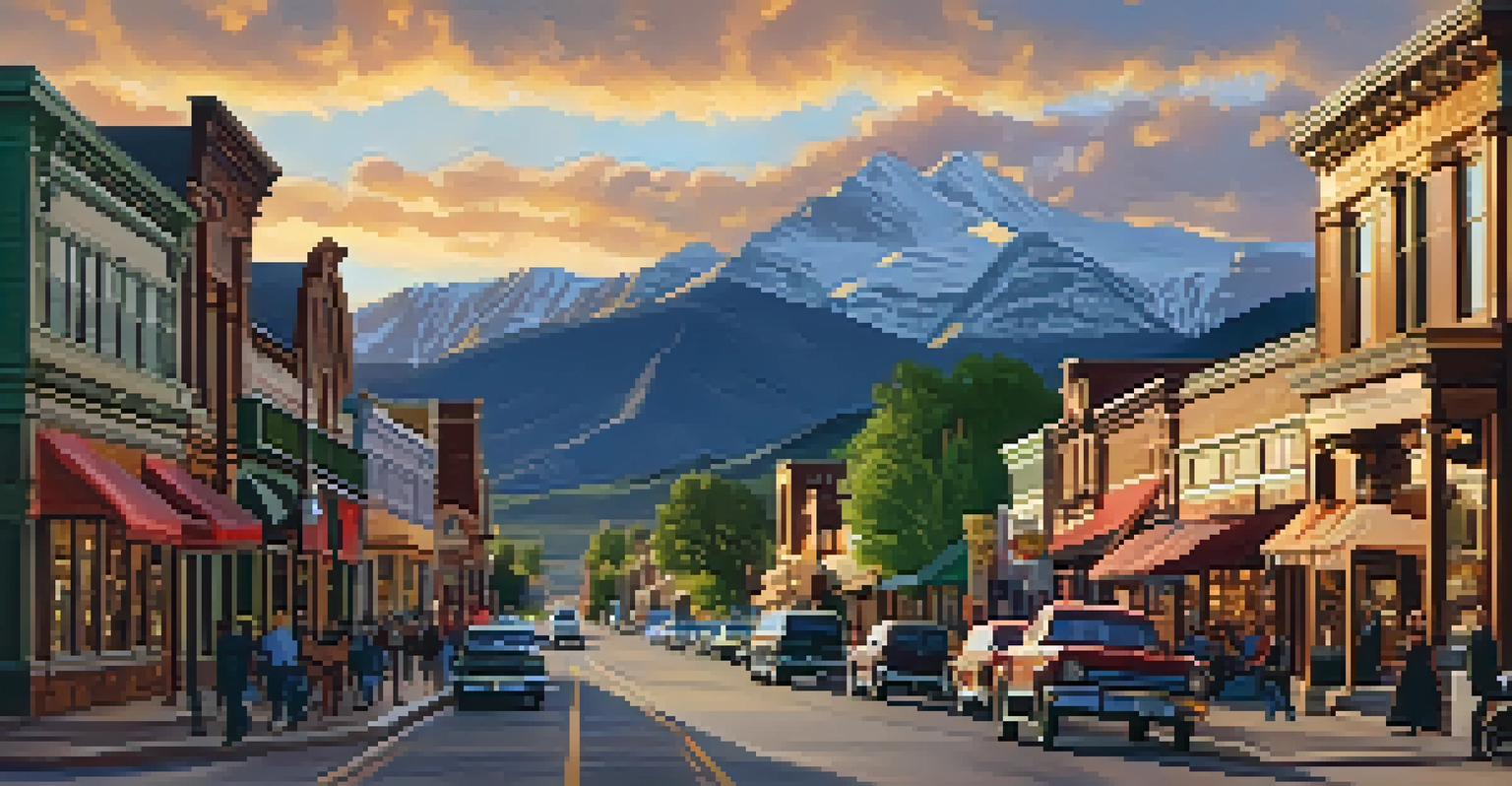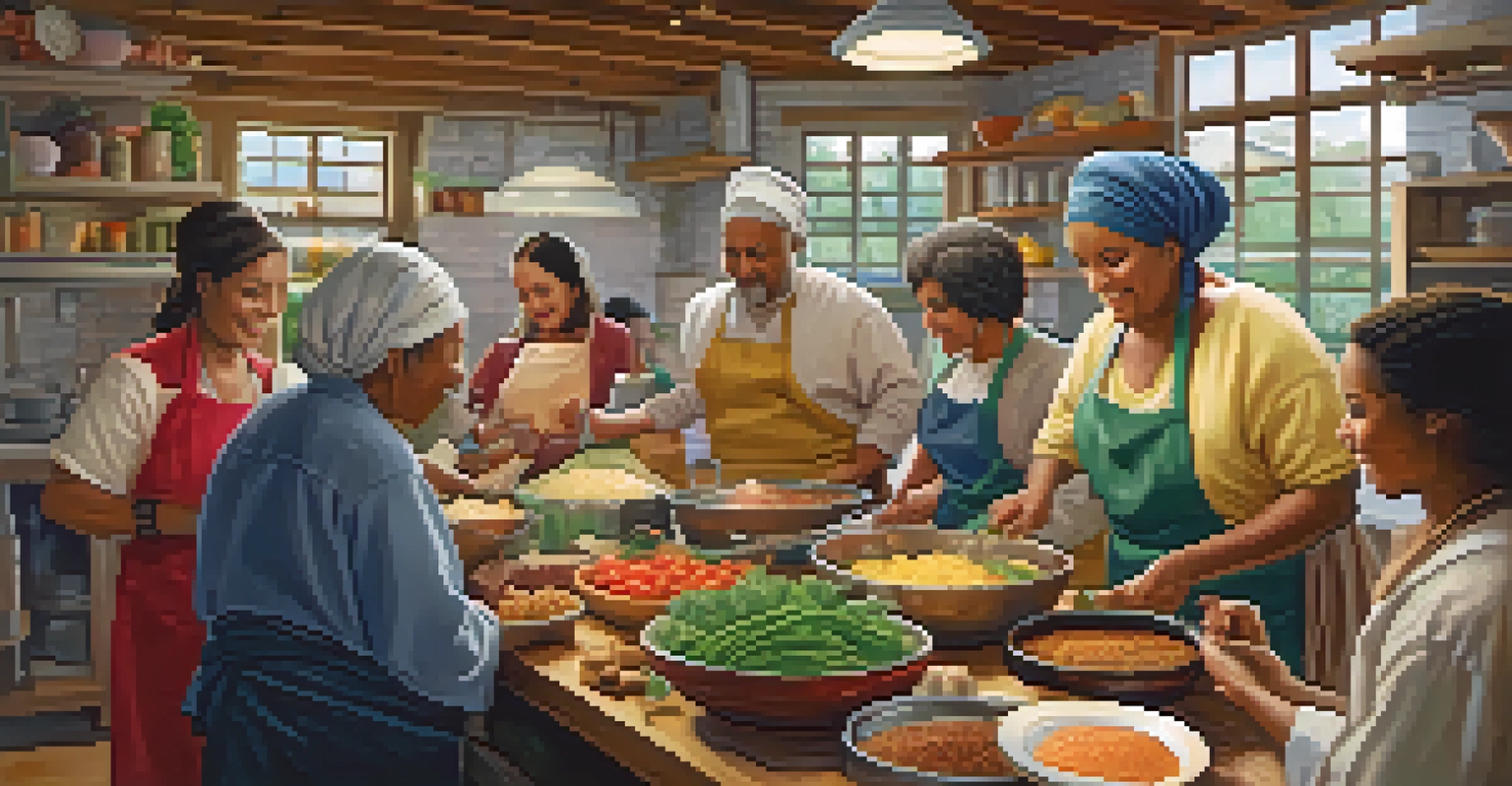Immigration Waves: Influences on Colorado's Cultural Fabric

The Early Settlers: Foundations of Colorado's Diversity
Colorado's cultural fabric began weaving together with early settlers in the 19th century. These pioneers, primarily from European countries, brought with them unique traditions and customs. As they established farms and communities, they laid the groundwork for what would evolve into a rich cultural mosaic.
Diversity is not a reason for division but a reason for celebration.
The influence of these early immigrants can still be seen today in local festivals, food, and even architecture. For instance, the German and Irish immigrants introduced brewing traditions that led to Colorado's thriving craft beer scene. Their contributions not only shaped the state's identity but also created a sense of community among diverse groups.
As Colorado grew, it became a melting pot of cultures, with each group adding their own distinct flavor. This early wave of immigration set the stage for subsequent waves, making Colorado a hub of cultural exchange and innovation.
The Gold Rush: A Magnet for Diverse Immigrants
The Colorado Gold Rush of the mid-1800s acted as a magnet, attracting immigrants from around the world. People from places like Mexico, China, and Europe flocked to the region, each hoping to strike it rich. This influx not only increased the population but also brought a plethora of cultural influences that enriched the local community.

As these new arrivals settled in, they established neighborhoods and businesses that reflected their heritage. For example, the establishment of Denver's Chinatown served as a vibrant hub for Chinese immigrants, showcasing their traditions and cuisine. This melting pot of cultures created an environment ripe for collaboration and creativity.
Diverse Roots Shape Colorado's Culture
The early settlers and subsequent waves of immigrants have woven a rich tapestry of traditions that define Colorado's cultural identity.
The Gold Rush era exemplifies how economic opportunities can drive immigration, leading to a dynamic and diverse cultural landscape. The impacts of this period are still felt today, as many local customs and celebrations trace their roots back to these early immigrant communities.
The Post-War Era: Immigration and Cultural Revival
Following World War II, Colorado experienced another wave of immigration, driven in part by the need for labor and a quest for new opportunities. This era saw an influx of people from various parts of Latin America and Asia, each contributing to a revival of cultural practices. The result was a vibrant tapestry of traditions that transformed the state's identity.
We may have different religions, different languages, different colored skin, but we all belong to one human race.
Communities began to celebrate their heritage through festivals, art, and cuisine. For instance, the Cinco de Mayo celebrations in Denver reflect the rich cultural contributions of Mexican immigrants, showcasing traditional music, dance, and food. These events not only preserve cultural heritage but also promote understanding and unity among diverse populations.
This post-war wave highlights how immigration can breathe new life into a region, fostering creativity and cultural exchange. Colorado's evolving landscape became a testament to the resilience and adaptability of its immigrant communities.
Modern Immigration Trends: Shaping Today's Colorado
In recent years, Colorado has witnessed a new wave of immigration, fueled by globalization and economic shifts. Immigrants from countries like India, Syria, and East Africa have made their way to the state, each bringing their own customs and traditions. This contemporary influx has further diversified Colorado's cultural fabric, making it even more vibrant and dynamic.
Today's Colorado is a reflection of this diversity, with restaurants, art galleries, and community events showcasing the contributions of these new residents. For instance, the rise of food trucks featuring cuisines from around the world has become a popular aspect of Colorado's culinary scene. This evolution illustrates how immigration continues to shape local culture in fresh and exciting ways.
Cultural Festivals Celebrate Heritage
Festivals and cultural events in Colorado provide opportunities for communities to showcase their diverse heritages and foster unity.
Modern immigration trends not only enrich Colorado's cultural landscape but also challenge the state to embrace inclusivity and understanding. As communities come together to celebrate their differences, they create a stronger, more cohesive society.
Cultural Challenges: Navigating Diversity in Colorado
While the influx of immigrants has enriched Colorado's culture, it has also presented challenges. Issues such as cultural assimilation, language barriers, and social tensions can arise, creating friction in communities. It's crucial to address these challenges head-on to foster understanding and acceptance among diverse populations.
Programs aimed at promoting cultural exchange and education can help bridge gaps between communities. For example, local initiatives that offer language classes and cultural workshops encourage interaction and collaboration among residents from different backgrounds. These efforts not only help newcomers feel more at home but also enrich the lives of long-time residents.
Navigating these cultural challenges is vital for creating a harmonious society. By embracing diversity and addressing potential conflicts, Colorado can continue to thrive as a vibrant and inclusive community.
Celebrating Diversity: Festivals and Cultural Events
One of the most beautiful aspects of Colorado's diverse culture is its array of festivals and cultural events. These celebrations provide opportunities for communities to come together and showcase their heritage. From the Denver Greek Festival to the Colorado Black Arts Festival, there's something for everyone to enjoy and learn from.
These events often feature music, dance, art, and, of course, delicious food. They serve as a reminder of the rich tapestry of cultures that make up the state. Engaging with these festivals allows residents and visitors alike to appreciate the contributions of various immigrant communities and fosters a sense of unity.
Embracing Change for a Bright Future
As new generations of immigrants arrive, embracing their contributions will be essential for cultivating an inclusive and vibrant Colorado.
Celebrating diversity through such events not only honors the past but also paves the way for future generations. It's a powerful way to promote understanding and show that, despite our differences, we all share a common love for community and culture.
Looking Ahead: The Future of Colorado's Cultural Landscape
As we look to the future, it's clear that immigration will continue to play a significant role in shaping Colorado's cultural landscape. New generations of immigrants will bring fresh ideas, traditions, and perspectives that can further enhance the state's diversity. Embracing this change will be crucial for fostering a rich, inclusive environment.
Community engagement and collaboration will be key in navigating this evolving cultural landscape. By creating spaces for dialogue and shared experiences, residents can build bridges that connect different cultures. This proactive approach can help ensure that Colorado remains a welcoming place for everyone.

Ultimately, the future of Colorado's cultural fabric will depend on how we embrace and celebrate our differences. With open hearts and minds, residents can continue to cultivate a vibrant community that reflects the beauty of its diverse heritage.